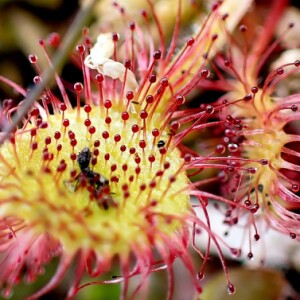Of herbivores and carnivores
We climbed Foel Drygarn, a none-too challenging hill that rises from the patchwork-fields, winding lanes and isolated hamlets of north Pembrokeshire to offer an impressive vista of the coastal landscape to the north.
A trio of massive stone heaps gives the place its name (Three Cairns), and are thought to be the burial mounds of long-gone local heroes.
Sheep and their mostly-well grown lambs were grazing all over; the ewes, not yet shorn, were losing their fleeces in the natural way with clumps of wool peeling off and lying in heaps and strands all over the gorse bushes. In one place two adjacent bushes seem to have acted like carwash brushes to strip away most of a pelt, left hanging there, ownerless.
Example of the result in first extra (she did not give permission for the photograph.)
(It was us humans of course who bred sheep to grow heavy fleeces that need to be shorn away every year, and which can so weight down an animal as to leave it stranded or 'cast'.)
A geometry of sheep walks intersects among heather and whinberry bushes (a purple bird dropping indicated that the latter are fruiting already) with patches of green and orange sphagnum moss where springs make the ground soggy. Surely, I thought, there must be sundew... and there was! It gives me a massive thrill to find this tiny carnivorous plant with its little round leaves covered in filaments each topped with minute blob of sticky red mucilage that attracts small insects with its sweet aroma. Once landed the creature is stuck and cannot escape. The leaf closes around it and digestive juices break it down within 15 minutes. The process evolved to enhance the nutrition of these plants (and many such worldwide) that live in challenging habitats.
The second extra shows a leaf with a tiny fly trapped inside.
(Finding sundew with my father on the Black Mountains of my childhood is one of my earliest memories.)



Comments
Sign in or get an account to comment.


